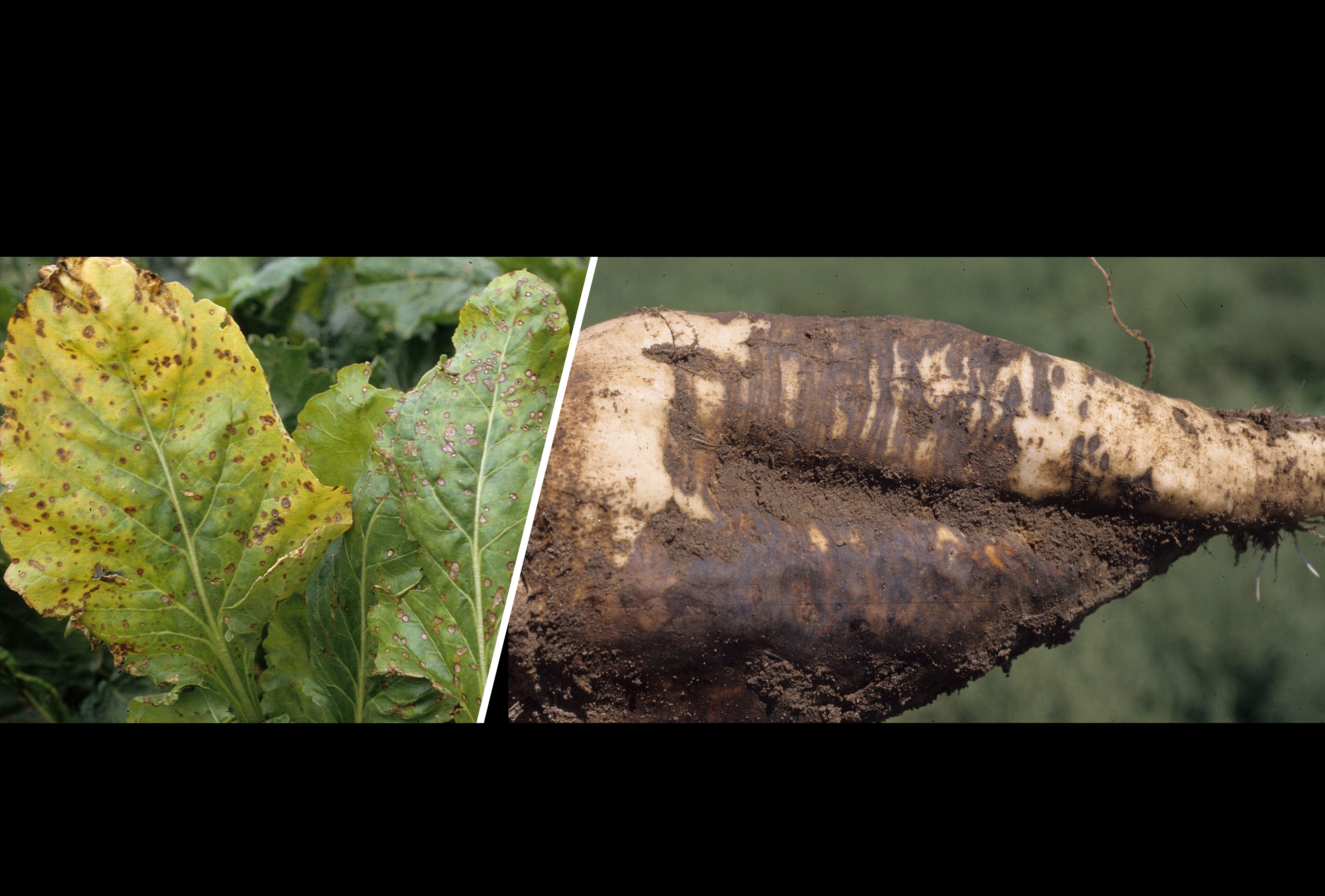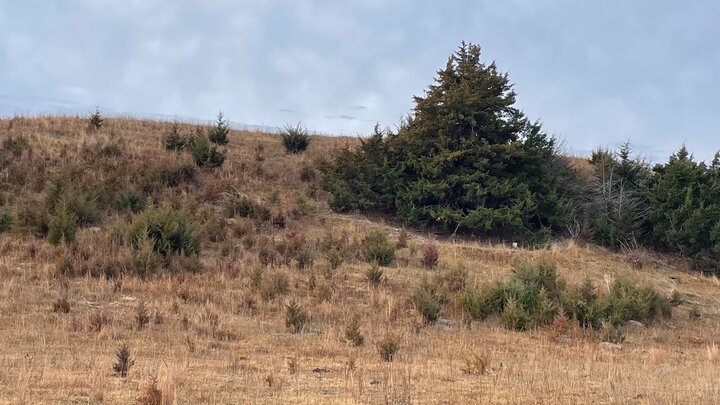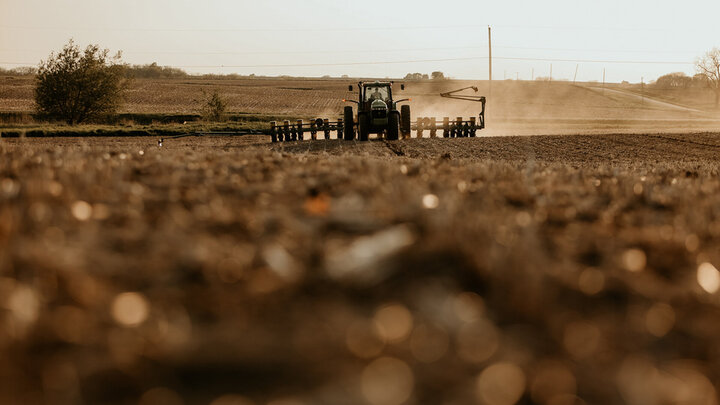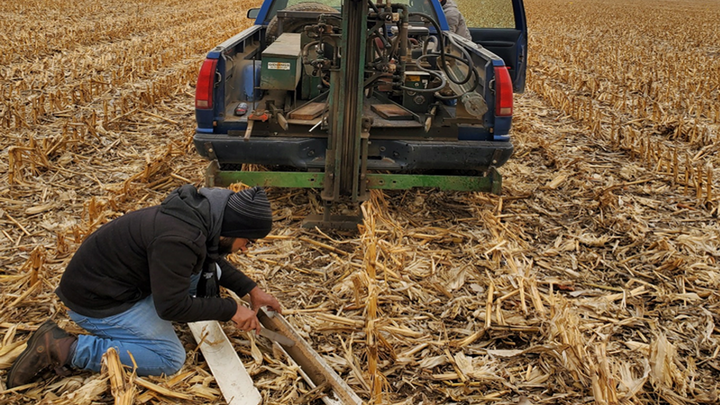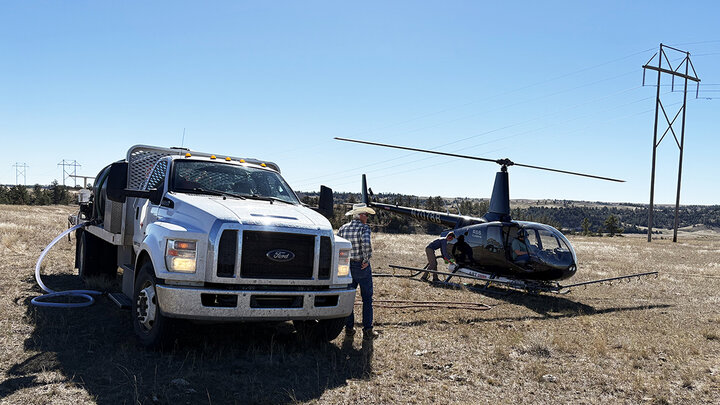By Robert Harveson, Extension Plant Pathologist
Pathogen
Rhizoctonia solani Kuhn. Teleomorph: Thanatephorus cucumeris (Frank) Donk. Fungal structures: hyphae and sclerotia. The pathogen produces no spores, but survives as resistant overwintering structures called sclerotia and bulbils, which are compacted masses of hyphae. The pathogen is widely distributed in soils worldwide, and induces root diseases on many different crops. Genetic relationships among strains are determined by their ability to fuse in culture, and are called anastomosis groups (AGs).
Different Rhizoctonia groups generally have some degree of host specificity and cause disease on different plants. For example, the AG that causes disease on wheat is the same one that induces damping-off in sugar beet seedlings (AG-4), but is different that the one that causes root and crown rot in beets (AG2-2). These relationships are not always consistent, and though seedling disease has most often been attributed to AG4, isolates belonging to AG2-2 have also been isolated from infected seedlings (32). Another disease of sugar beet not often seen, called dry rot is caused by R. solani, but different strains are responsible than those of Rhizoctonia root and crown rot.
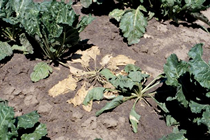
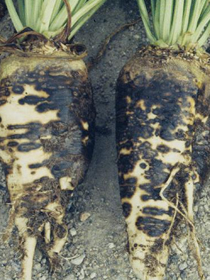
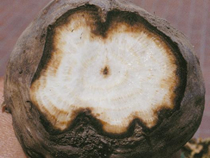
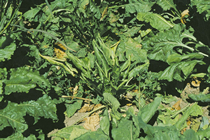
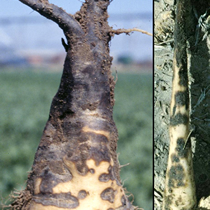
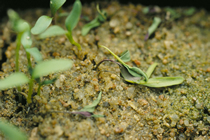
Disease Symptoms
Rhizoctonia root rot is characterized by sudden, permanent wilting, and complete collapse of leaves and petioles. Root symptoms begin as circular to oval, localized dark lesions that coalesce to form larger rotted areas of the root as disease progresses. Extent of rotted tissue often is restricted to external layers of the root and does not generally penetrate into the interior until very advanced stages of disease (10,14,15,30). Two different phases of root rot have been reported, one being infections beginning in the crown (crown rot), often associated with soil thrown up into crowns during early cultivations (29,35). The other phase involves earlier infections occurring on taproots as a tip rot (root rot), and progressing upward on the root. Both phases involve the same type of foliar symptoms.
Favorable Weather Conditions
The pathogen over winters in soil and plant debris as hyphal fragments, sclerotia, or bulbils, and becomes active when soil temperatures approach 78° to 90° F. Seedling disease may occur if beets are planted late into warm soils. Certain strains may also cause a foliar blight under conditions of high humidity. Rhizoctonia root disease may occur in almost any soil, but is most severe in heavy, poorly drained soils or in depressions in fields where water pools. Infection also commonly results when cultivation deposits soil into beet crowns.
Management
Genetic Resistance
One of the most economical methods of management is to plant resistant cultivars locally adapted to the production area.
Cultural Practices
Planting early will help to avoid early infection, thereby reducing impact of pathogen. Cultural practices that introduce soil into the crowns should be minimized. Crop rotation with small grains may help to reduce the number of pathogen survival structures in soil. Controlling susceptible plants like pigweed will also reduce disease incidence in beets.
Chemical/Biological Control
Seed treatments with various fungicides will control damping-off. Applications of the strobilurin fungicide Quadris, (azoxystrobin) is now available that has been demonstrated to protect plants from the crown rot phase of the disease.
Links
For additional information, see the UNL Extension NebGuide, Rhizoctonia Root and Crown Rot of Sugar Beet (G1841).
